Miniature Stories
Private
- Joined
- Feb 26, 2019
- Messages
- 32
We are proud to release the first wave of figurines in our Chinese Opera/Wayang set.
This Chinese Street Opera set was something we envisioned from the start and we are very proud to finally release this beautiful set of figurines.
Our Chinese Opera set of figurines depict a Cantonese Opera called “The Great Seal of the Six Kingdoms” (六国大封相). This Opera is set during the Warring States Period (475-221 B.C.). It tells the story of how the renowned politician, Su Qin, lobbied the six states to adopt the Vertical Alliance strategy and unite against the State of Qin. This Opera is popular during Chinese holidays such as the Spring Festival. In accordance with the season, the costumes are colourful and elaborate.
Future releases will feature the complete to-scale wayang stage, and a slew of backstage performers and props/constumes that will occupy the rear half of the stage.
For now, our initial release consists of:
1) Chinese General - 6 different colours (each sold separately) SH043
2) Horsemen - 6 different colours (each sold separately) SH045
3) Female Dancer SH044
4) Trio of musicians playing playing the Er Hu (二胡), Suo-Na (嗩吶), and Yang Qin (揚琴) SH046
5) Duo of musicians playing the Gong (锣), Tanggu (堂鼓 ), Bangu (板鼓), Cymbals (镲) and Bangzi (梆子) SH047
Bring home a slice of history and heritage into your living room!
Purchase your figurines here:
https://www.miniature-stories.com/pro.../heritage-figurines/
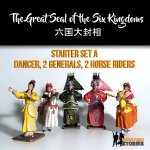
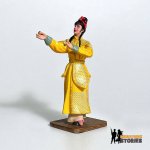
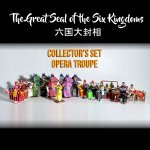
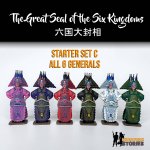
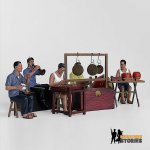
********************
For those of you who would like to learn more, Chinese Opera, or Chinese ‘wayang’, is a form of theatrical performance. Chinese immigrants first introduced them in Singapore during the late 19th century. In the old days, it was performed for both entertainment and at religious festivals to honour deities. It was an integral part of the Chinatown scene, and typically performed on makeshift wooden/bamboo stages, drawing large crowds, with popular troupes and artistes even garnering their own legions of fans.
The popularity of Wayang grew and dedicated opera theatres were even constructed in Chinatown, example: Lai Chun Yuen at Smith Street (which was also known as “theatre street”) and Heng Wai Sun and Heng Seng Peng at Wayang Street (now known as Eu Tong Sen Street). Although it's popularity has waned with the advent of mass media, it remains an important part of Chinese heritage and culture.
This Chinese Street Opera set was something we envisioned from the start and we are very proud to finally release this beautiful set of figurines.
Our Chinese Opera set of figurines depict a Cantonese Opera called “The Great Seal of the Six Kingdoms” (六国大封相). This Opera is set during the Warring States Period (475-221 B.C.). It tells the story of how the renowned politician, Su Qin, lobbied the six states to adopt the Vertical Alliance strategy and unite against the State of Qin. This Opera is popular during Chinese holidays such as the Spring Festival. In accordance with the season, the costumes are colourful and elaborate.
Future releases will feature the complete to-scale wayang stage, and a slew of backstage performers and props/constumes that will occupy the rear half of the stage.
For now, our initial release consists of:
1) Chinese General - 6 different colours (each sold separately) SH043
2) Horsemen - 6 different colours (each sold separately) SH045
3) Female Dancer SH044
4) Trio of musicians playing playing the Er Hu (二胡), Suo-Na (嗩吶), and Yang Qin (揚琴) SH046
5) Duo of musicians playing the Gong (锣), Tanggu (堂鼓 ), Bangu (板鼓), Cymbals (镲) and Bangzi (梆子) SH047
Bring home a slice of history and heritage into your living room!
Purchase your figurines here:
https://www.miniature-stories.com/pro.../heritage-figurines/





********************
For those of you who would like to learn more, Chinese Opera, or Chinese ‘wayang’, is a form of theatrical performance. Chinese immigrants first introduced them in Singapore during the late 19th century. In the old days, it was performed for both entertainment and at religious festivals to honour deities. It was an integral part of the Chinatown scene, and typically performed on makeshift wooden/bamboo stages, drawing large crowds, with popular troupes and artistes even garnering their own legions of fans.
The popularity of Wayang grew and dedicated opera theatres were even constructed in Chinatown, example: Lai Chun Yuen at Smith Street (which was also known as “theatre street”) and Heng Wai Sun and Heng Seng Peng at Wayang Street (now known as Eu Tong Sen Street). Although it's popularity has waned with the advent of mass media, it remains an important part of Chinese heritage and culture.

